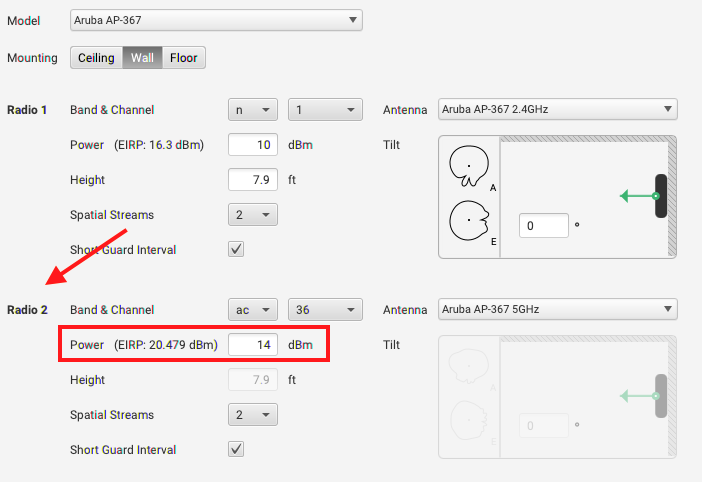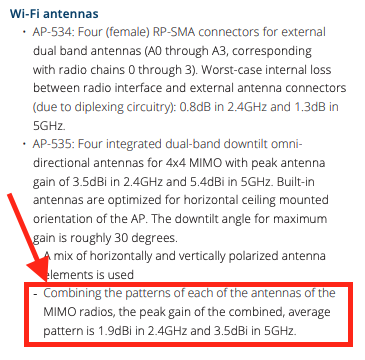Have you ever completed a wireless deployment and noticed that your validation survey doesn’t match your predictive design? I’m not saying that there isn’t room for a small amount of variability, but rather I’m talking about fairly significant differences between the predictive signal level and what is actually measured (adapter offset aside). There are many reasons that this could happen including incorrect antenna patterns, incorrect wall attenuation values, incorrect scaling on the map, and on and on. Did you know it could also be from incorrect power values used within Ekahau for building your predictive design?
We all know that whenever you are building a predictive design, you’ll need to determine what power level you will be using for the APs in order to properly determine placement and quantity of hardware needed to meet the network requirements. Within Ekahau, for each radio there is an input for radio power level that is used by the software to model the predictive signal levels in the environment. For users of many wireless vendors, you simply put the same Tx power level you would use in the controller into the field and presto the calculations are complete. Yet, if one does this with an Aruba design you may notice that your deployment does not produce the expected results based on your predictive. Why is that?

Within the Aruba system, users don’t set a Tx power level but rather the EIRP of the AP. Thus if you use the same value from the Aruba config within Ekahau, you will produce a predictive design that has signal levels higher than what can be measured in the real world deployment. While in many cases the levels may not differ by a large amount, the higher the dBi of the antenna being used the greater the discrepancy between your predictive and validation survey will be.
Let’s look at an example. If you look at the example above, if a user were going to build a design for an EIRP of 14 dBm, using 14 in Ekahau would produce an EIRP of 20.5 dBm. This 6 dBm difference could result in vast gaps in coverage if this design were implemented. Pretty straightforward right?
So how can we determine the value to use within Ekahau for Aruba AP radio power? In the case shown above for an EIRP of 20.5 dBm, a power level of 14 dBm is needed as the antenna gain of the AP-367 5GHz antenna is 6.5 dBi.
The math is pretty simple. Take the EIRP you want to use in Aruba and subtract the antenna gain shown on the datasheet. If the datasheet has more than one antenna gain, use the one that comes after “combining the patterns of each of the antennas of the MIMO radios” for the particular band in question.

I hope this helps you avoid building a bad predictive design in the future. Always remember that a predictive design is ONLY as good as the information you the user inputs into Ekahau.
-Scott
Thanks Nick Shoemaker for the Ekahau screen shot since I didn’t have a copy of Ekahau handy!









Pingback: Don't forget about MIMO | The it Rebel
Pingback: With Extreme Power comes Extreme Responsibility | Wi-Fi Vitae
Pingback: With Extreme Power comes Extreme Responsibility | Wi-Fi Vitae